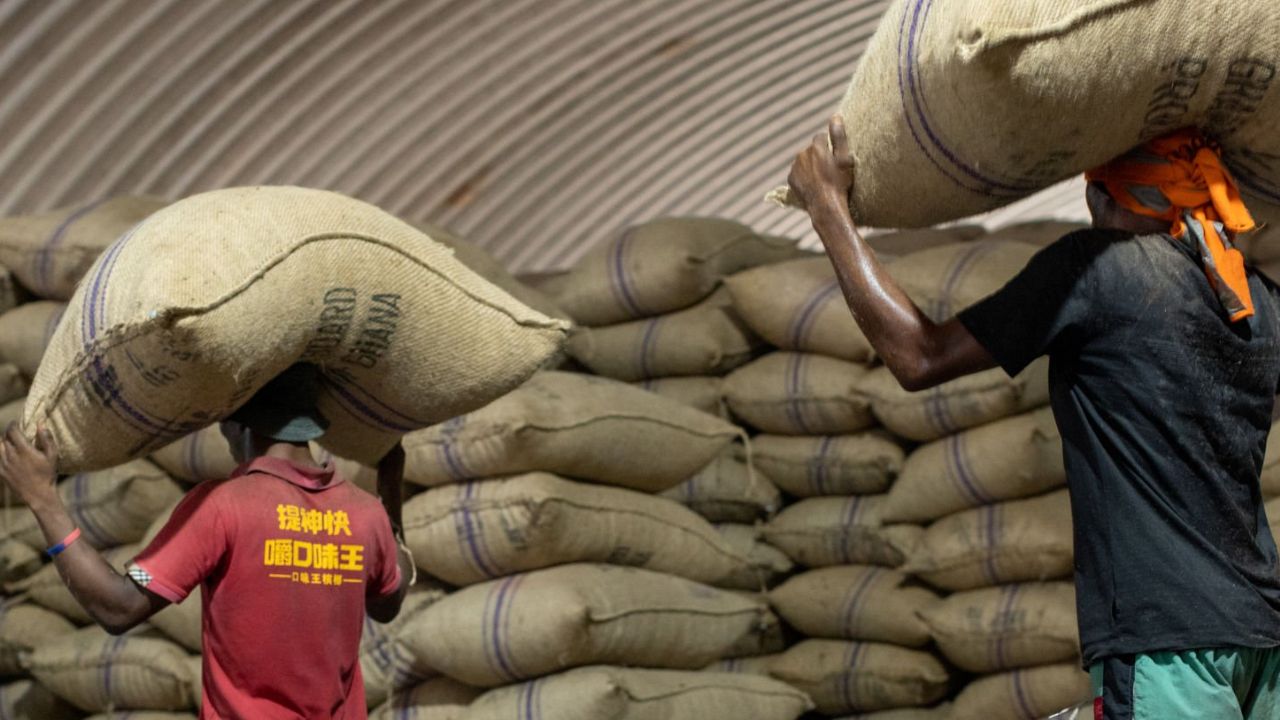Ghana experienced a substantial decline in its trade surplus during the first two months of the year, dropping by 54% to $392.8 million. This downturn can be attributed to a notable decrease in cocoa crop yields and export revenue.
According to official reports, the Cedi currency continued to weaken, experiencing an 8.3% loss of its value against the dollar. This depreciation was primarily influenced by the significant drop in cocoa export revenue, which declined by nearly a third to $508.4 million.
Despite the global increase in cocoa prices, Ghana faces challenges in its agricultural sector. The expected harvest for the 2023-2024 season has been revised down to 650,000-700,000 tons from the initial forecast of 850,000 tons. This downward revision indicates potential struggles in meeting production targets and sustaining export revenues.
The Ghanaian Economy is Under Strain Due to a Cocoa Shortage
Ghana, renowned as the globe’s second-largest cocoa producer, finds itself grappling with a formidable economic hurdle as its trade surplus experiences a pronounced shrinkage owing to a diminished harvest.
In January and February, the Bank of Ghana divulged a striking 54% reduction in the trade surplus, plummeting to $392.8 million. Concurrently, cocoa export revenue witnessed a staggering drop of nearly one-third, dwindling to $508.4 million.

Despite a notable uptick in New York cocoa futures prices, which have surged by over twofold this year to $8,939 per ton, Ghana’s cocoa industry faces distressing setbacks attributable to adverse weather conditions, disease outbreaks, and a shortage of fertilizers across West Africa.
Cedi Under Significant Strain
The reduced cocoa revenue is exacerbating the woes of Ghana’s currency. The cedi has already depreciated by 8.3% against the dollar this year, making it the third-worst performer among 24 African currencies.
The depreciation of the cedi is directly linked to the decrease in trade surplus and the difficulties faced in the cocoa sector. This emphasizes the currency’s susceptibility to changes in Ghana’s primary export markets.
Economic Indicators in Focus
In the latest report from the Bank of Ghana, several significant economic and financial indicators have been highlighted.

Total exports experienced a marginal increase of 1.6% year-over-year, reaching $2.9 billion, while imports surged by 26% to $2.5 billion.
Gold exports saw a notable uptick of 16.6%, amounting to $1.3 billion, and oil shipments increased by 12.4% to $620 million. However, the country’s gross international reserves saw a modest growth of 4.6%, reaching $6.2 billion, maintaining a coverage of 2.8 months of imports.
The budget deficit for 2023 narrowed to 3.3% of GDP, while public debt climbed to 610 billion cedis ($46.76 billion).


